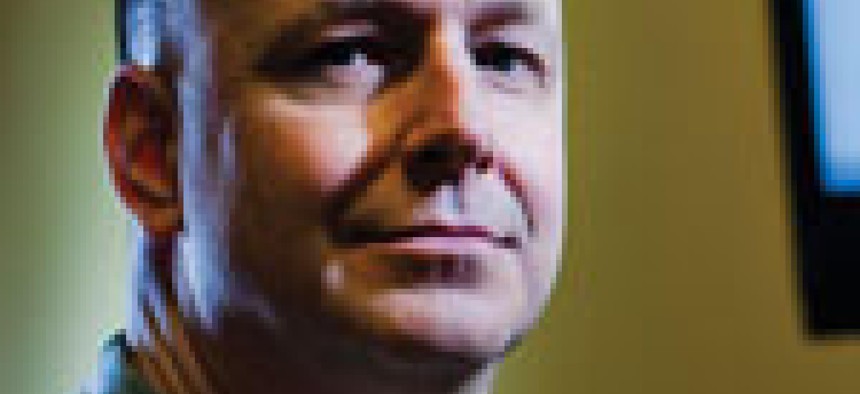Geesey saves lives with technology

An Army colonel led the effort to connect soldiers with mental health specialists as part of a wider campaign to prevent suicides.
When it comes to people at risk of suicide, quick access to professional help can be a matter of life and death. Unfortunately, soldiers in combat zones traditionally have had to endure long waits to see a mental health specialist. But then Lt. Col. William Geesey, product manager of the Army’s Medical Communications for Combat Casualty Care, spearheaded an effort to use technology to digitally connect soldiers in the field with mental health specialists, helping them get a jump on the diagnosis and treatment of post-traumatic stress disorder or any other mental health issue.
We had already been working on a number of telehealth initiatives in Iraq and Afghanistan, so we didn’t really start from scratch. The Army suicide prevention campaign kicked off a lot of the focus on soldier suicides and [other mental health issues]. There was a perception of a lack of access to mental health specialists in theater. Some studies show you’ve got ratio of 1 to 10,000 or [1 to] 15,000 when it comes to licensed clinical providers and soldiers, and they’re spread out all over the place. The challenge was really about access.
Travel in Afghanistan is difficult and dangerous. We’ve got soldiers spread all over in a wide area, so the goal was to really increase access to those service members. What we did was to basically leverage existing commercial off-the-shelf technology in a new way as a force multiplier for mental health and health care providers.
We already had significant experience in theater. We had been operating beginning in Iraq in 2004, 2005, so we were familiar with the environment. We had been in Afghanistan since 2007, so we knew our customers and their needs. The Army’s attention and focus moved to suicide prevention, and we looked at how we could better leverage technology to help the warfighters who are out there.
With any new initiative, there’s a little resistance to the effort. But people came onboard really quickly because they saw the value and the need in the project. The greatest challenge was probably overcoming the bureaucracy of network access. The Army has a lot of different networks, and anywhere you go, you need to get permission from someone different.
After we set up initially in Afghanistan — even before we got feedback on the pilot — there was a real demand to expand it, and we immediately expanded to Iraq and Kuwait. Another significant challenge was the introduction of a new technology in the middle of war and casualties. Everyone is already working on overload, and you show up and say, “Hey, we’ve got something new for you to do.”
Thirty-eight percent of the providers who were surveyed said this capability reduced travel time by 24 to 36 hours. Thirty percent of the time, it was taking 24 to 36 hours to get to the location of a service member who needed some mental health services. Now we can bring that soldier through a [video processing capability] to the provider.
I’ve been doing this for a long time; I’ve been with the Army almost 28 years. These are my brothers and sisters, the people I work with every day in harm’s way, and I feel a real connection to them. Basically, it’s about making a difference for them, making their lives easier and giving them greater capabilities in the missions they have to do.
Read more about the 2012 Federal 100 award winners.
NEXT STORY: Army Totally Blanks Out on Congressional Report





